Spring Production of Sharrow Props Sold Out
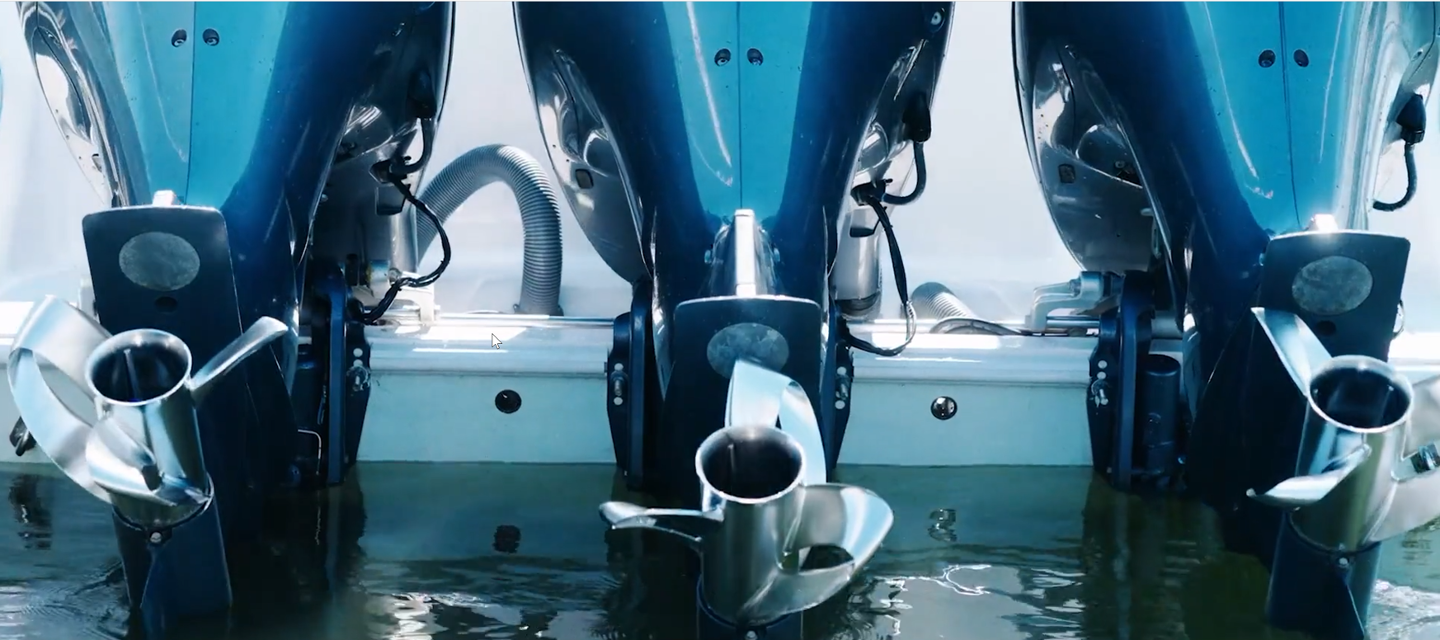
CEO Greg Sharrow says that after BoatTEST’s release of test data of his props on a 32’ (9.75 m) catamaran in December, he sold out of Spring production well ahead of schedule. This overwhelming sales spike confirmed the strong interest from the boating Industry for its revolutionary propeller design, even though they cost $5,000 apiece. He said that selling out so fast, “Paved the way for expanding our capacity at a more aggressive pace.”
The Dawn of New Prop Technology
Sharrow props are not off-the-shelf. Each one is designed individually to match every application and is made to order. That is to say that each prop made is intended for a specific horsepower engine, with a stated gear ratio on a boat with a known displacement. The process from the time that the order is placed until the props are delivered takes from three to four months.
In normal times, that would sound like a long time. But in these days of Covid-consequences and shipping delays, it is actually not so bad. Currently, all major propeller brands are back-ordered for over a month or more and some won’t even speculate when deliveries can be made.
Happily, all aspects of Sharrow prop production from raw stainless steel ingots to the foundries to the 5-axis router finishing, the polishing process and delivery crates are made in the U.S.
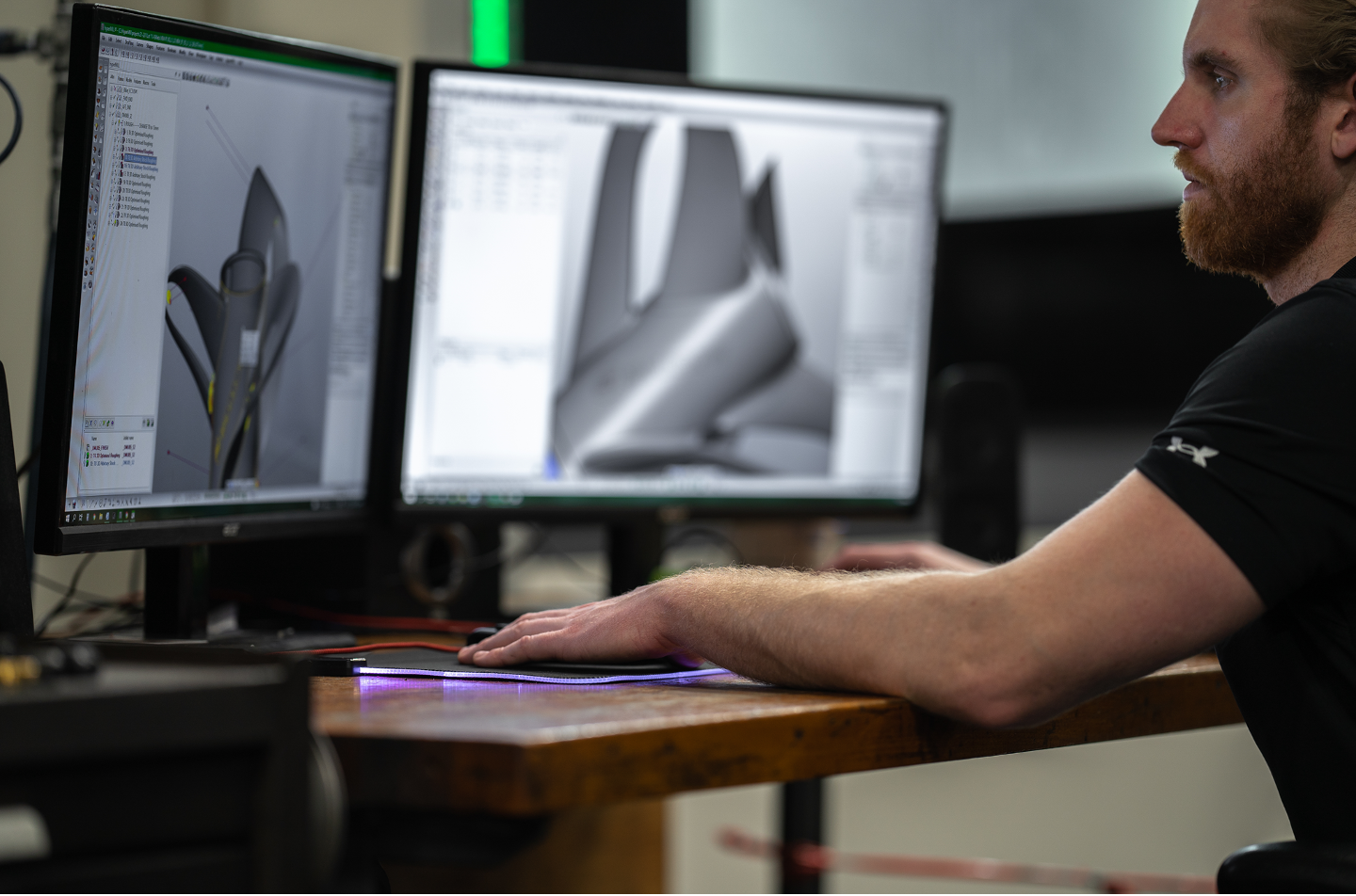
Why Does it Take so Long to Make a Sharrow Prop?
Every Sharrow prop made is designed on a CAD screen with proprietary software developed by the company’s engineers. The data that the customer fills out on Sharrow’s website with an order is fed into the computers, matched against performance already documented in real-world testing and computer modeling. Then individualized code instructions are written and sent to 3D printers.
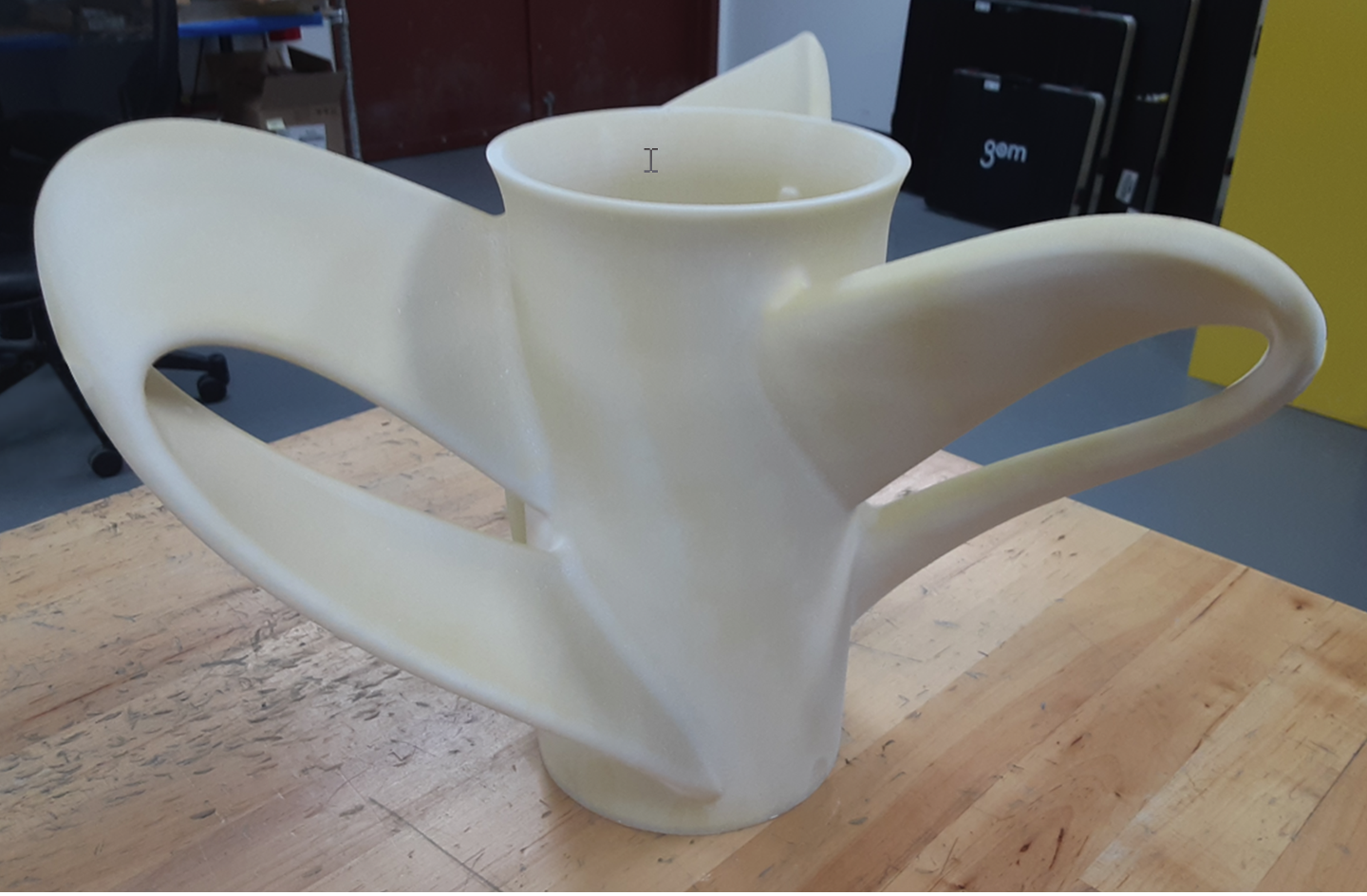
Once the design is completed, the CAD data is sent to a 3D printing machine that creates the exact geometry of the finished prop made out of thousands of layers of wax. This is a time-consuming process that can’t be rushed.
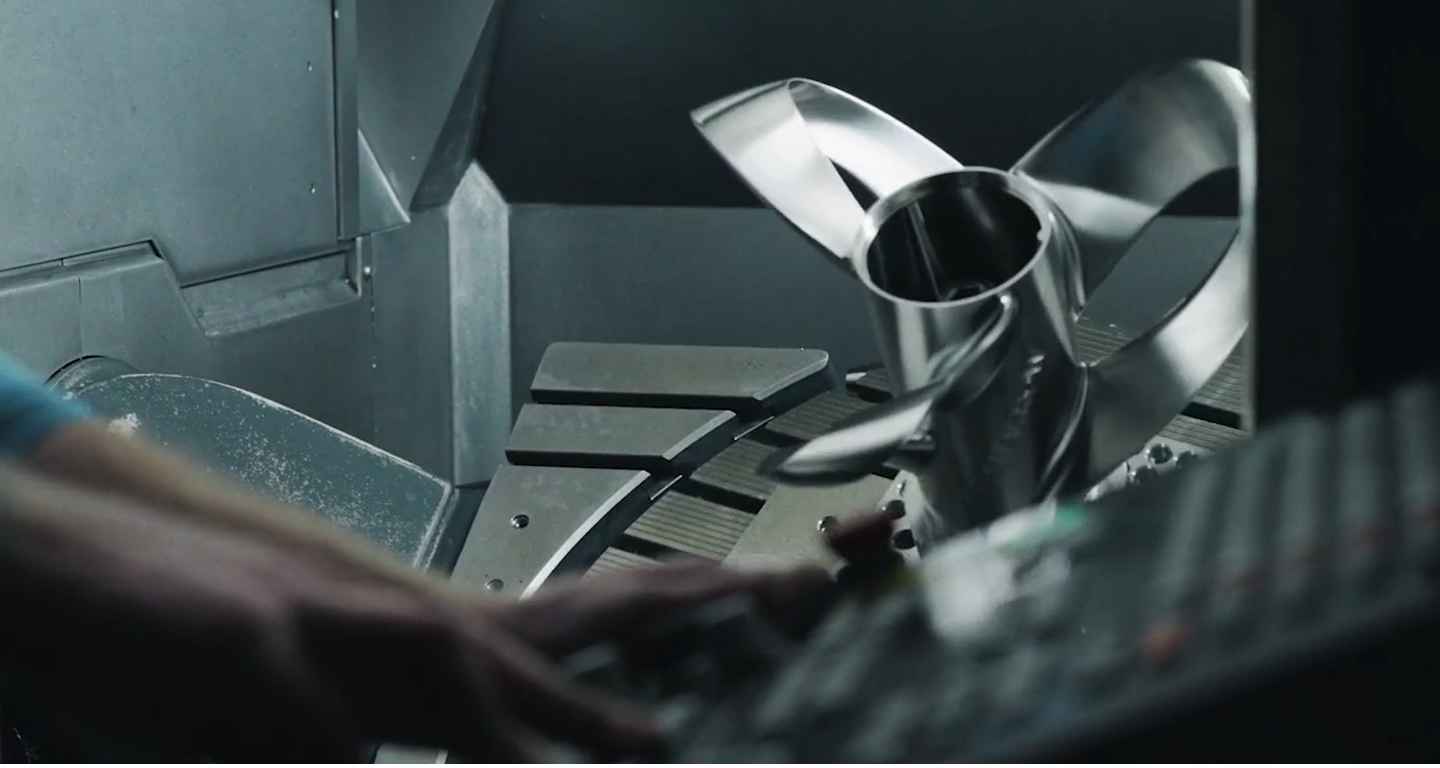
Virtually all SS props – including Sharrow Props – are made with the lost wax method technology, which dates back 6,000 years to the Indus Valley. Where the Sharrow props are different is the level of complexity of the design that is beyond the capabilities of many foundries, we’re told. However, Sharrow has sourced three foundries, all located in the American Midwest that can cast the complex design.
No Prop Casting Comes Out Perfect
Once any prop is cast, its surface is rough and there is unwanted excess metal, called gates and risers, that must be ground off in the “finishing” process. Sharrow props are finished on a $500,000 5-axis router. The CAD-CAM router is programmed with the precise geometry created by CAD software and is milled to .003 of an inch – a tolerance unheard of in the conventional marine prop business. Because Sharrow props are a loop design, there are not three-blade surfaces – but six – so this is also a time-consuming and costly process involving CAD-CAM software and expensive robotic machinery.

With conventional props, after casting, the finishing process involves hand grinding. If that is not enough to meet spec, the prop is pounded by hand with a hammer, in what can only be described as relatively low tech.

Are Sharrow Props Stronger than Conventional Ones?
A comment often heard from boaters contemplating a Sharrow prop is that they must be easy to break. Since the prop is complex and looks like a twisted ribbon, it is naturally thought of as delicate. However, a Sharrow spokesman recently stated that the Sharrow props are actually stronger than conventional propellers because of "loop." He said that conventional props have relatively thin blade tips, whereas the Sharrow design is not thin at its outer extremity, and in fact, has no tip. Further, each prop blade is connected to the hub in two places, not one.
The company has a “Sharrow Care” repair program and it is said to be training prop repair technicians in high-use areas.
A Flood of Test Data
The reason that Sharrow pops turned in such a startling performance on the 32' World Cat test that was released in December 2021 was that it confirmed the performance of the Sharrow prop we tested in 2019 on a 20‘ bowrider with a 150-hp engine.
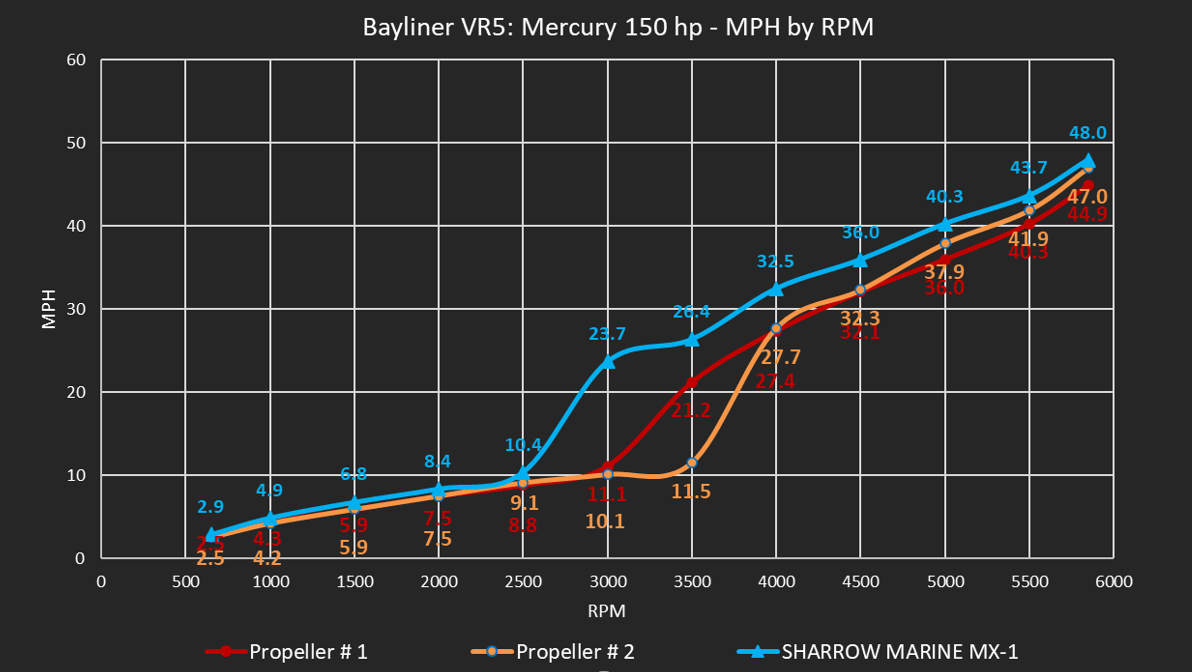
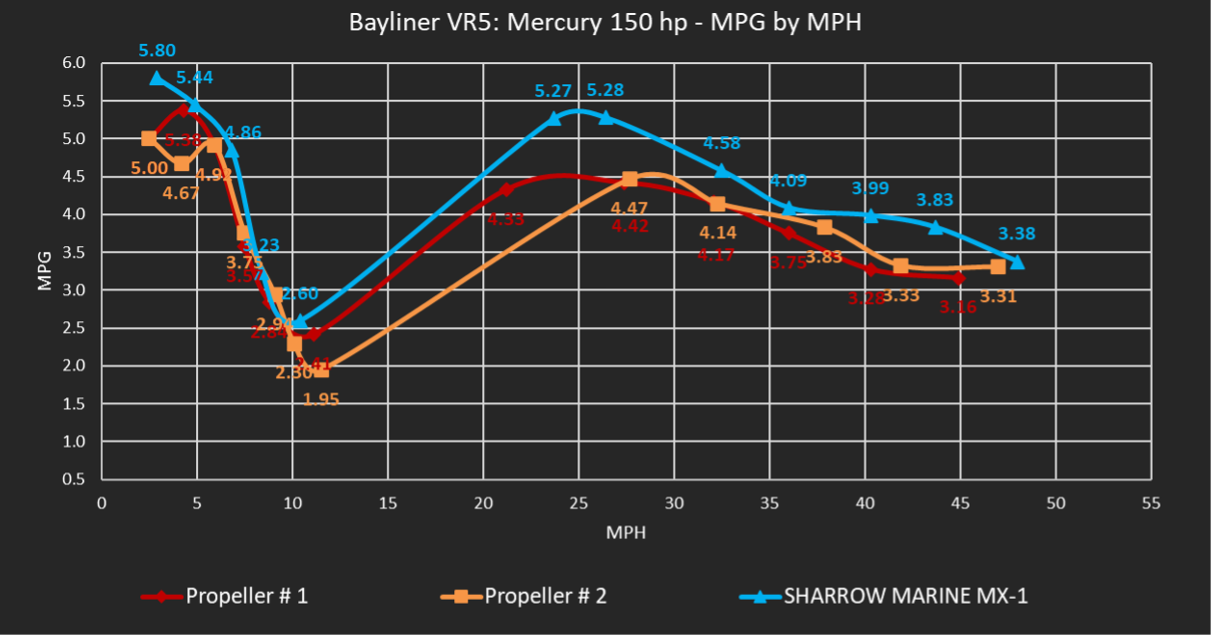
Late last fall, the Sharrow props were tested against conventional SS props, which are widely recognized to be among the best in the industry fitted to a 300-hp Yamaha outboard. The results were remarkable.

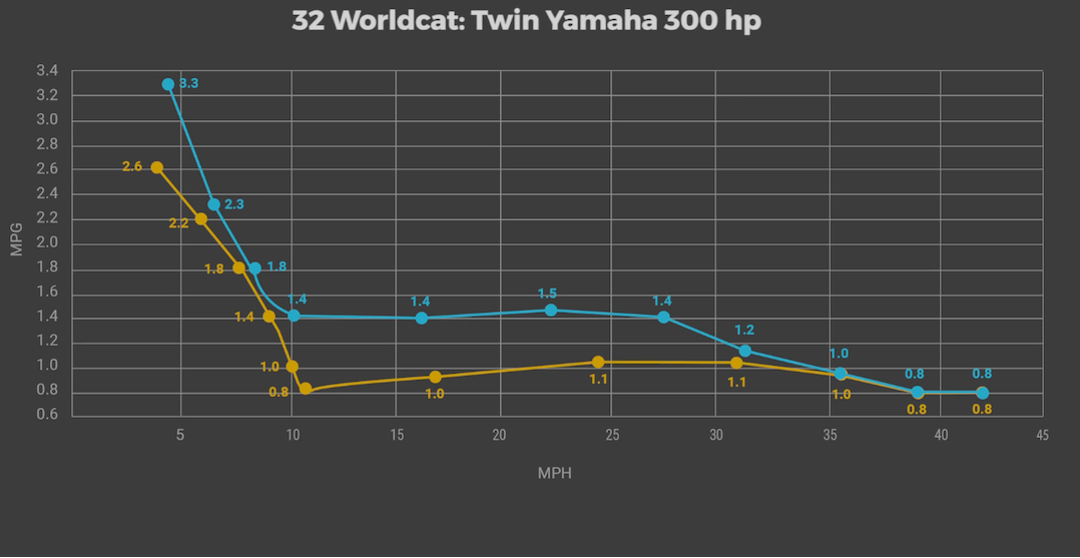
The result was that from 10 mph to 27 mph, the boat driven by Sharrow props was from 40% to 75% more fuel-efficient. Further, it was faster at all RPM and its top-end was .4 mph faster than the conventional props – which themselves were designed for excellent high-end performance. This was a tough hurdle to beat and was considered a major success by the Sharrow engineers.
Faster and More Fuel Efficient
This bit of data stunned the prop industry, which figured that while the Sharrow design might be faster in low and mid RPM ranges, its performance would flag at the top end. It did not. But more importantly, at 3000 RPM it was solidly on plane at 21.7 MPH, while the boat with standard props was mushing along at just 10.6 MPH.
Clearly, the Sharrow design was able to better harness the torque of the twin 300-hp Yamaha engines, deliver it to the water and get the boat over its bow wave so it could plane.
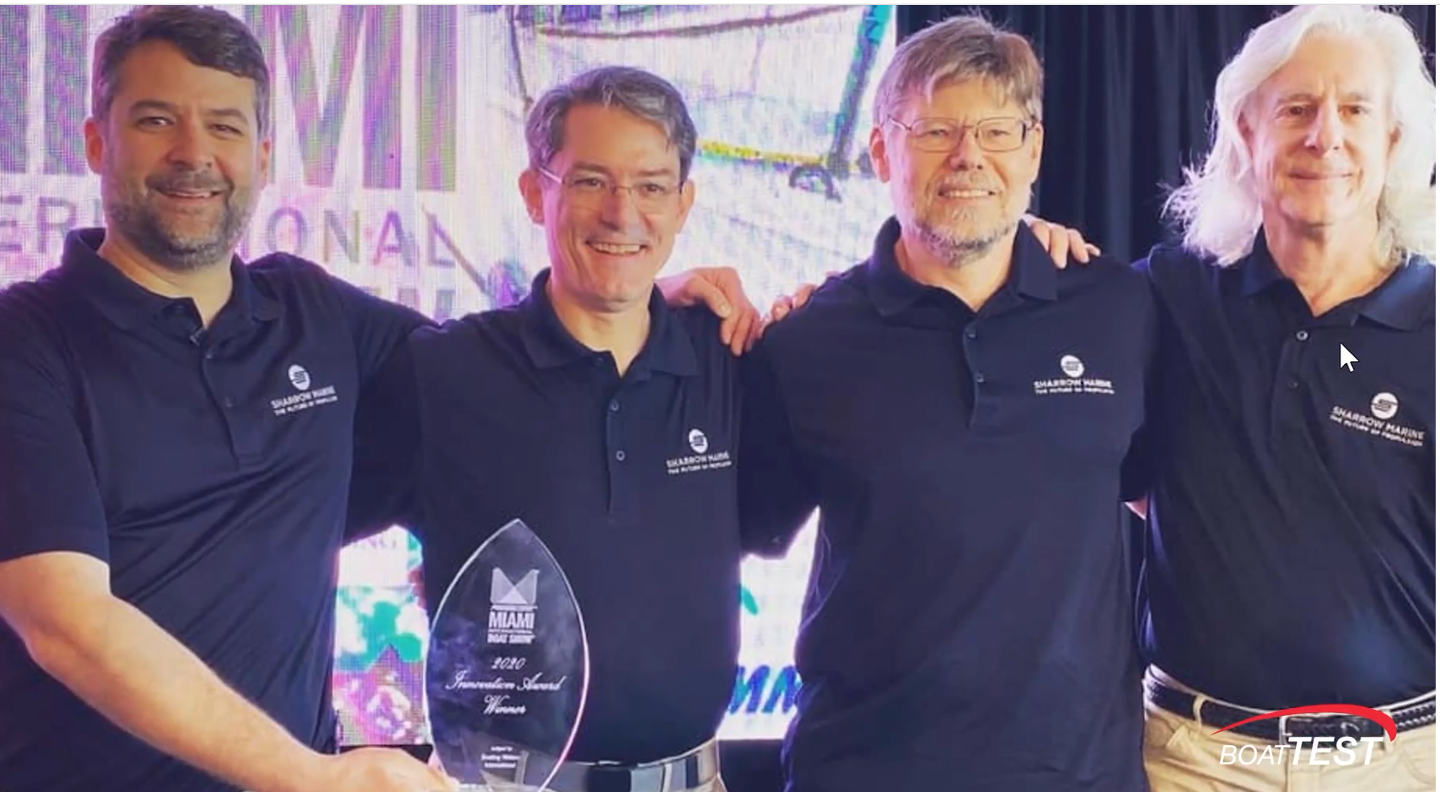
The Delivery Schedule
Sharrow Marine says that people who reserved their props in December, before the company cut off taking prop orders for the Spring, should get their props in March and April.
The company said people who reserve their Sharrow props in January and February of 2022 should get their new props in May or June. A spokesman said that a rolling production cycle with orders and deliveries three to four months out will produce a continuous flow of props in the future.
Those wanting to know more about Sharrow props should see the videos and reports on BoatTEST’s product model page. Click here…
Those wanting to know more about the props should go to Sharrow Marine’s Website…